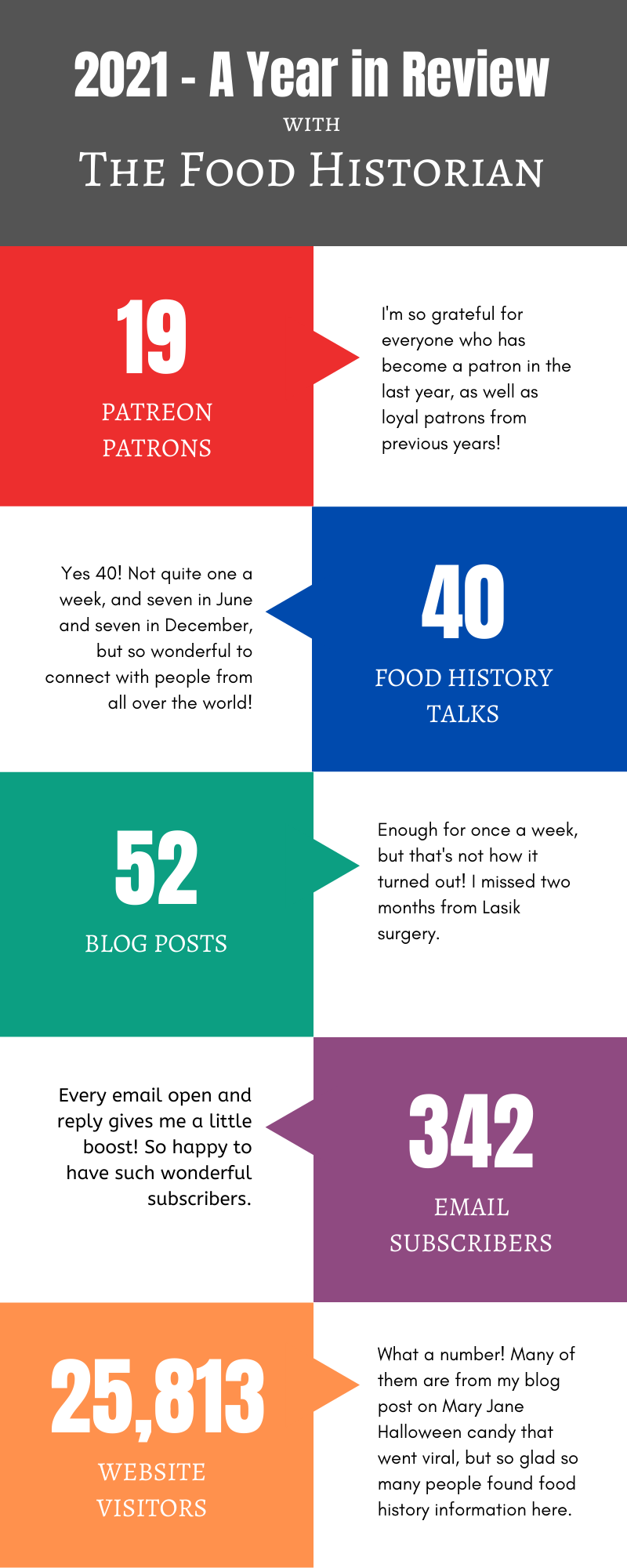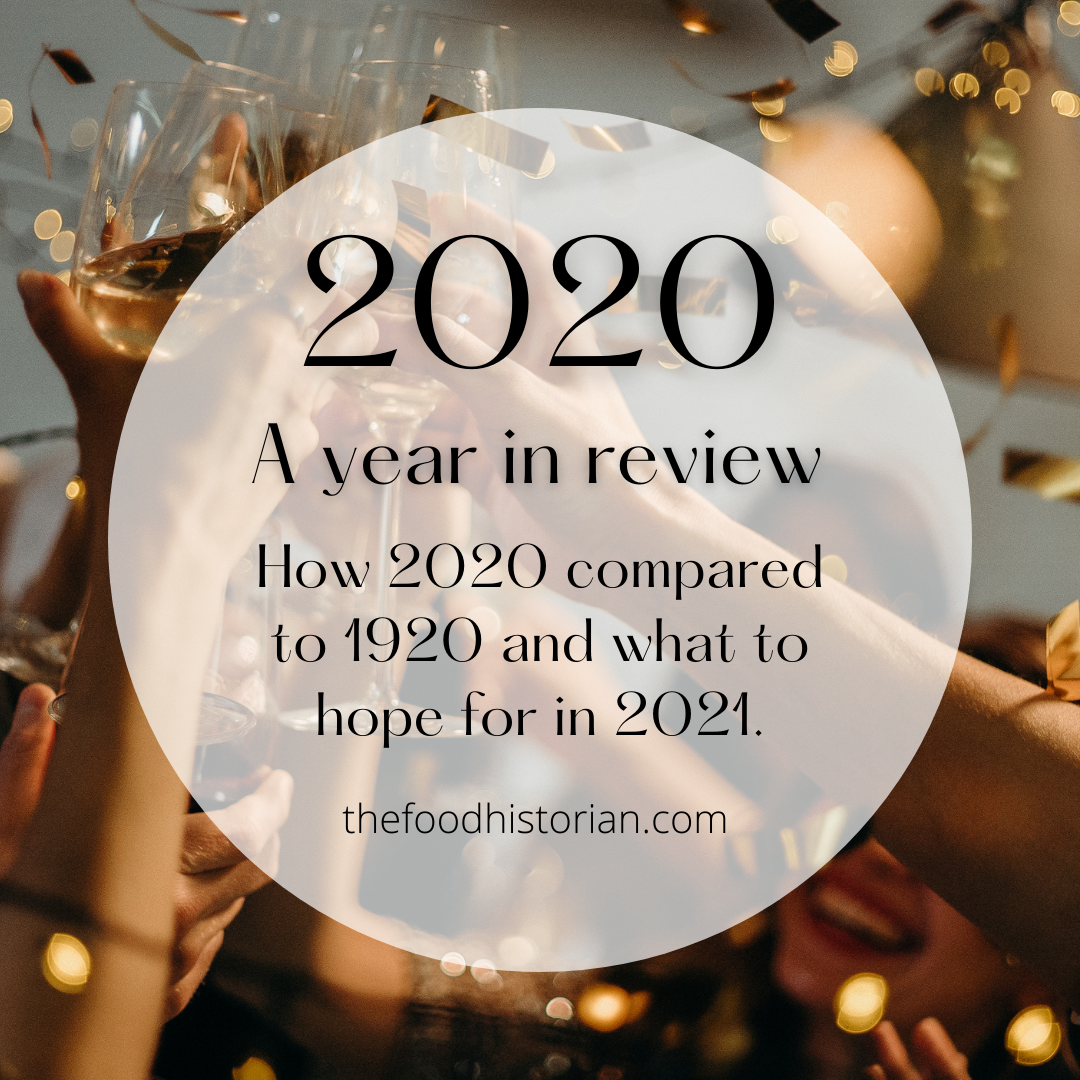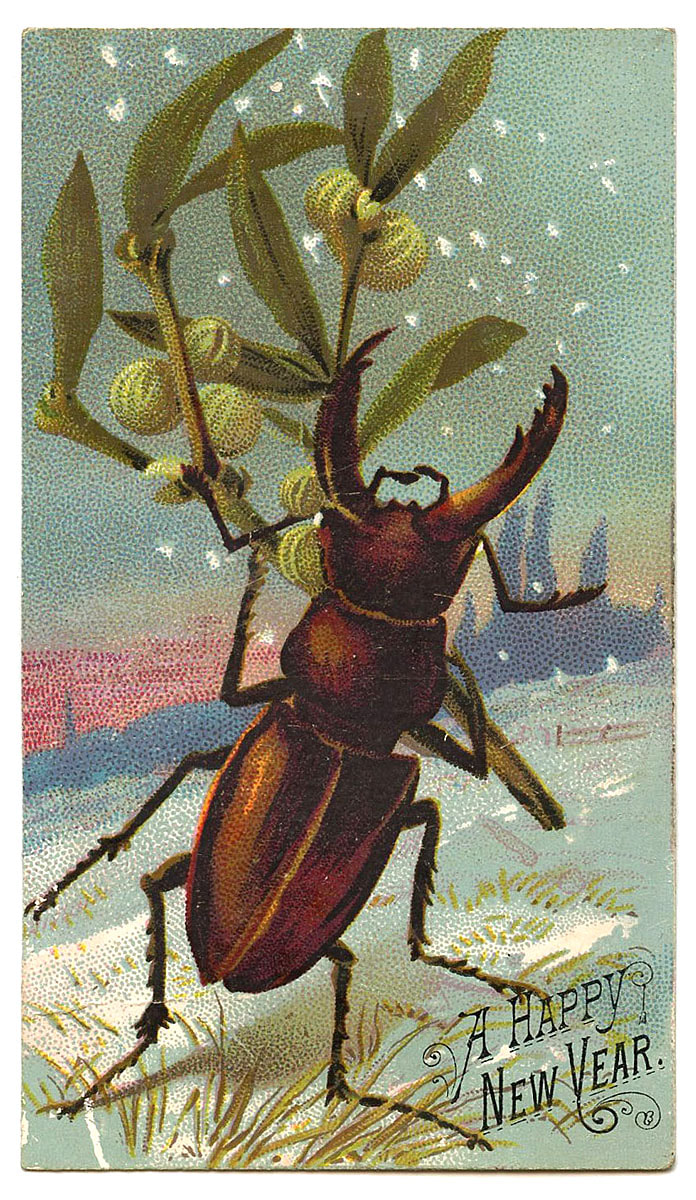|
It's hard to believe it's already 2022. Another year has come and gone, and we're still in a global pandemic. A few days ago this political cartoon from 1921 was posted on Reddit and a whole host of other social media pages. It ended up in my newsfeed and seemed particularly apt. I've written before on the comparisons between a century ago and today (here and here), but the longer the pandemic drags on, the more the comparisons seem spot on. "A return to normalcy" was the slogan of Warren G. Harding's 1920 political campaign. It promised that Americans could ignore all of the scary things that had happened since 1917, when the U.S. entered the First World War. Although his rhetoric about a return to the mythic, bucolic past (sound familiar?) he won the election by a landslide. Unfortunately for Americans, his strategy of conservative (in the original definition) rhetoric and laissez-faire deregulation after the federal control of World War I ultimately failed. The United States didn't return to pre-WWI normalcy, and while the deregulated economic boom lifted some boats very high, it left other Americans in the lurch and completely on their own. Harding's successors largely followed his economic plans, including World War I Food Administrator Herbert Hoover, who ended up overseeing the crash of 1929 and the onset of the Great Depression. While I don't think we're headed for another Great Depression (for one, our social safety net is far better than the non-existent one of the 1920s), there has been a strong social reaction to the pandemic that is similar - a craving for a return to normalcy of our own, of wanting the pandemic to be over before it is, and of ignoring many of the traumas it has inflicted on us individually and collectively. I've felt that a lot this past year. After the frenetic pace of working on reduced hours through the 2020 lockdown, desperately trying to squeeze everything into fewer hours and pushing myself to be more and more efficient, 2021 has taught me the importance of rest. I'm not always very good at taking it, but these last few weeks I've tried my best to not feel guilty about sleeping in and doing nothing, even as I can't stop myself from commenting on food history memes! 2021 was less frenetic than 2020, but it was a lot. Here's the year by the numbers: Welcome to our new Patreon members, Susan, Elizabeth, Becky, Phyllis, Steve, and Deborah! It's been lovely having your support! I did FORTY separate food history talks in 2021. All but one was virtual, thank goodness, but it meant that being The Food Historian essentially amounted to a second job on top of my museum day job. And although they weren't quite once a week (there was a blank spot in July and August after I got Lasik surgery), I did actually post exactly 52 blog posts in 2021. Those of you on my email list have hopefully enjoyed regular blog posts in your inbox and look at those website visit numbers! A few things didn't make it to the end of 2021 - Food History Happy Hour had to be sacrificed to the lecture gods, sadly. We made it to June, but Lasik surgery derailed things. Although I'm very happy with my new eyes and giving up glasses after 25 years, recovery took longer than expected. Guess it was 2021 telling me to rest again. Despite the two month break, I'm very happy with how many posts I completed! Here's the top ten of the year. Top 10 Blog Posts of 20211. The Real Story Behind the "Gross" Black and Orange Halloween Taffy I posted this one in the fall of 2020 just before Halloween, but it was by far the most popular, racking up over 9,000 unique pageviews. A number of older blog posts were also popular, but this is a review of 2021, so I'm not including the others! 2. Before Nestle: A History of White Chocolate I posted this one on Valentine's Day. And while it was a bit of a slow burn, it was the most popular of my 2021 blog posts. Inspired by a comment about who "invented" white chocolate, it sent me down the research rabbit hole. 3. Visiting Home & a Brief History of North Dakota Caramel Rolls, a.k.a. Dakota Rolls This was my first blog post after Lasik surgery and after a trip home. I hadn't been home in several years, and seeing (and eating!) giant North Dakota-style caramel rolls made me wonder what the history was, but there wasn't much on the internet, so I wrote one! 4. What's the Difference Between Hot Chocolate and Hot Cocoa? With Recipes! One of the first posts of 2021! Posted in conjunction with a talk I do on hot chocolate, this was a fun one to put together, and answered a burning question! 5. When Kitchens Worked: The Rise and Fall of Functional Kitchens This post was inspired by a wonderful 1940s film on YouTube outlining the ideal kitchen layout. I fell in love, and clearly other folks did, too! 6. Meatless Monday: Easy Rice Pudding 2021 was a year for comfort foods, and this simple recipe was one of my favorites. Clearly it resonated with other people, too. 7. World War Wednesday: The Mystery of Carter Housh I originally wrote this post in 2020, but the mystery kept bugging me. In 2021, I decided to revisit Carter Housh's biography, tracking down little snippets and finding as much information as I could! It inspired me to do research on subsequent poster artists for WWI and WWII. 8. Food History, Slavery, and Juneteenth This one was a look into some of the quintessentially American foods created by enslaved people and made accessible by the global slave economy. 9. World War Wednesday: Eat More Milk It's always interesting to see which post make the list, and I think this one is in the top ten solely because of the stunning WWI poster. 10. Making Their Own Way: Black Women Cooks in the 19th Century This was one of my favorite posts of the year, and I'm so glad it made the top 10! It was inspired by the compelling story of the first known published Black woman cookbook author - Malinda Russell. I did also make some progress on last year's goals! Once again the uncertainty of the pandemic and the nation's attempted return to normalcy meant I didn't have a ton of mental space to work on the book, although I have gotten several tasks done and I'm getting ever closer to completion. I did, however, get my bookshelves up and my library organized!  My filled library bookshelves! My filled library bookshelves! Getting my library catalog updated is going to take a little longer (anyone want an internship? Lol.). But having spent the last year working from home two days a week my little garret office is as cozy as can be, with lovely lamps and my matching bookcases, and a little green velvet chair and footstool, and a vintage-looking bluetooth speaker for lovely music. And for Christmas I got an ergonomic cushion for my chair and my husband got me a very fancy second monitor, which will make transcribing newspaper articles and editing videos so much easier! And although getting published in the popular press was NOT one of my goals for 2021, it happened anyway! I was invited to select historic cookies and write about them for TheKitchn.com, and an editor friend asked me to write for a local arts weekly back home. The pieces were published in December and you can find them below:
My goals for 2022 are more modest. Make progress on the book (hopefully finally finish!), keep up the blog, and try to get some more work published. I've got lots of post-book plans, so go to hurry up and turn it in to the editor! A friend of mine chooses a word every year to aspire to. This year I decided to follow suit! My word of the year is "cultivate." Appropriate for a food historian and someone who is hoping to start a garden this spring. But it also represents the slow, steady pace of growing The Food Historian, planting seeds for the future, and, in terms of the book manuscript, weeding! If you pick a word of the year, tell me in the comments! 2021 wasn't a dumpster fire for me, but the last two years have been pretty destabilizing, globally. I hope you'll all be a little kinder to yourselves and the people around you. Try to get some more rest, sleep in, drink lots of water, get outside, stretch every now and again, and do the things you love. Here's to a year of finishing what we start, and making a new beginning, rather than trying to go backwards. Normalcy is overrated. The Food Historian blog is supported by patrons on Patreon! Patrons help keep blog posts like this one free and available to the public. Join us for awesome members-only content like free digitized cookbooks from my personal collection, e-newsletter, and even snail mail from time to time! Don't like Patreon? Leave a tip!
0 Comments
What a year this has been. A global pandemic, flailing economy, the end of truth as we know it, and the abject failure of political leadership in our country (to the point of cult-like devotion to a would-be dictator) - I don't think anyone thought 2020 would turn out like it did. But, surprisingly, it has a lot more parallels to 1920 than we might think. I've already written about comparisons between the coronavirus pandemic and WWI and the Spanish Flu, including eerie parallels with struggling onion farmers (similar things happened with milk and dairy farmers, but I didn't manage to get a blog post up about that!), and as 1920 was the start of Prohibition, I wrote about the Temperance movement and our road to Prohibition. Other parallels to 1920 include a widening income inequality, including struggles with stagflation (a.k.a. the "high cost of living"), the politics of laissez faire economics that favored big business over ordinary people, a post-war recession as European agriculture and manufacturing rebounded, racial tensions and violence and the rise of the KKK (including the work of the Daughters of the Confederacy to rewrite textbooks and put up Confederate monuments). All of these as-of-yet unaddressed issues that are all rising up again, 100 years later. When the year first started, I was looking forward to our own "Roaring Twenties" decade, but what I had in mind was more jazz, loosening social strictures, and feminism. Not global pandemic, economic and racial strife, and crazy politics. My 2020 New Year's Resolutions didn't turn out quite as I'd hoped. My goals were to write more, teach, organize, and form a food historian community. I didn't get as much writing done on Preserve or Perish as I wanted. I underestimated how much a global pandemic would hamstring the intense higher thought that is required for the complicated task of original research and book editing. I DID make progress though, and that's what counts. What I did to was write a lot more about cookbooks and historic recipes, which WAS one of my goals, as I look back. Although I did not get any online courses up (although at least two are percolating as we speak), I DID do a lot of virtual teaching, both informally through Food History Happy Hour, which was often the highlight of my week or month, and more formally with the incredible number of virtual speaking engagements I did this year (and already 2021 looks like it might outstrip 2020, now that people are used to Zooming). The organizing I didn't get much of a chance to do until this month! Some Christmas money meant I could afford to order 3 more bookshelves to match my existing ones in my guest-bedroom-cum-office-and-library, and that's about it in terms of what I can fit up here. I also rearranged where my desk is and made room for the new shelves, which should arrive next week. And while I didn't go about creating an intentional food historian community, I have watched with pleasure the new folks joining in on Facebook, the food history community on Instagram, and of course everyone who has supported me on Patreon. My goals in 2021 are a little more modest - keep Food History Happy Hour going as long as I can, keep plugging away on the book, and keep this blog going. And finish reorganizing my library and making my office more functional and cozy. I didn't expect to spend nearly as much time up here as I did, but working from home does that to a girl. Do you have any 2021 goals? Or don't want to jinx it? Top 10 Posts of 2020My maintenance of the blog was a little more hit or miss this year than I would have liked. Sadly, World War Wednesday kind of fell by the wayside compared to 2019, although I hope to bring it back in full force in 2021. I did, however, get to focus a lot more on historic recipes. Here are the top 10 blog posts (thanks, Google Analytics!), published in 2020, in order of popularity. 1. Black Food Historians You Should Know This one I published back in February of this year, but I wrote it because with a few exceptions, I felt that Black food historians were not getting their due in the food sphere. 2. Food History Happy Hour: Beef Fizz (1960s?) This is the only Food History Happy Hour post on the list, which is kind of sad considering how many of them I did! But no one could deny the lure of the beef fizz craze that made the rounds of the internet, thanks to a Reddit post. I still haven't tracked down where the original recipe came from, so if anyone has an idea, let me know! 3. Food and the "Flu": Spanish Flu of 1918 The coronavirus pandemic was on everyone's mind earlier this spring, and since comparisons abounded to the Spanish Influenza epidemic of 1918 (which lasted well into 1919), I thought I would see what I could dig up on the food history of the "flu." 4. The Real Story Behind the "Gross" Black and Orange Halloween Taffy Moral of the story here is apparently I need to hop on more random internet trends. This one was inspired by another meme making the rounds of social media and it was fun to dig into the real history. 5. Lydia Maria Child's Pumpkin Pie (1832) The timeliness of this post, which I put up the day before Thanksgiving, probably had a lot to do with its popularity, but it was also my first cooking demo video! So that was also fun. 6. World War Wednesdays: Gospel of the Clean Plate This short and sweet blog was one of the first of the year - discussing the issue of food waste and food conservation during WWI. Why it got so popular I have no idea, but there you go! 7. Celebrating Indigenous Foods Another one I managed to publish "on time" for Native American Heritage Month, it also came at a time of reckoning with American mythology around the pending Thanksgiving season. It was fun to research - there were a few foods on the list that even I didn't realize were indigenous to the Americas. 8. One Year Later - The Food That Built America I have to tell you - I STILL get people, old friends, acquaintances, and even occasionally strangers, who excitedly tell me - I saw you on TV!!! :D I'm just glad the show turned out so nicely and (spoiler alert) keep your eyes peeled for yours truly on at least one, possibly two more shows in 2021. 9. Scratch Chicken & Dumpling Soup (1942) The colder weather and the still-raging pandemic must have meant that folks wanted to stay in and be cozy. And this dumpling recipe from Ida Bailey Allen hit the spot. 10. Virginia Apple Pecan Election Cake Another timely one, this time posted ON election day. Although it's not a "real" election cake in terms of historical association with election day, it was still delicious and much easier than the yeast-based real deal. And that, my dears, is that. Did you have a favorite blog post from 2020? If you missed the earlier ones, you can always peruse the month-by-month listings on the blog (at right) or by category. You can also use the search box at the bottom of every page of the website. Here's to seeing 2020 quickly out the door, and hopefully welcoming in a kinder, more sane, more truthful 2021. The Food Historian blog is supported by patrons on Patreon! Join us for awesome members-only content like free digitized cookbooks from my personal collection, e-newsletter, and even snail mail from time to time! |
AuthorSarah Wassberg Johnson has an MA in Public History from the University at Albany and studies early 20th century food history. Archives
July 2024
Categories
All
|





 RSS Feed
RSS Feed